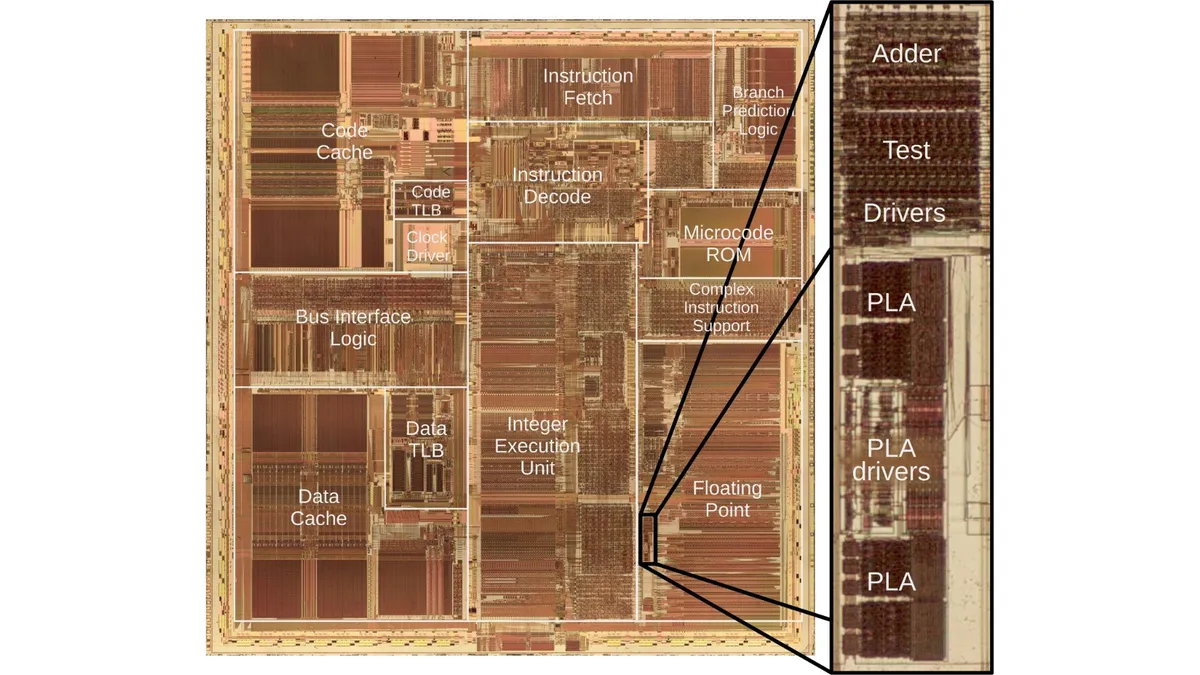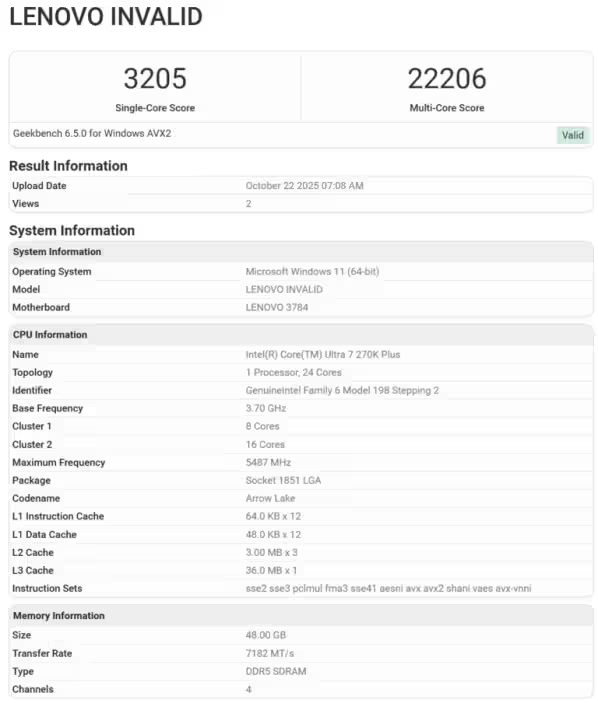Intel processor found 30-year-old FDIV bug: it cost the company $475 million

Famous computing historian and reverse-engineer Ken Shiriff discovered the exact transistors in the original Intel Pentium processor that caused the famous FDIV bug that led to the company’s first-ever product recall in 1994. The damages totaled $475 million.
Here’s the damage.
Technical details of the bug
Schiriff examined in detail the programmable logic array (PLA) on the Pentium chip where the error division table was located. The processor, built on the P5 architecture using the 800nm process, contained 3.1 million transistors. To identify the defect, Shiriff used a microscopic photograph of the crystal, merged into a single map.
The error in the division table stemmed from missing transistors that were responsible for representing values from -2 to 2 in 112 rows. Five cells in the table contained the value “0” instead of “2”. This led to rare but significant math errors in floating-point calculations.
The error occurred in the division table due to missing transistors, which were responsible for representing the values -2 to 2 in 112 rows.
Market Reaction and Intel
Intel initially stated that the bug was extremely rare, suggesting that it only occurs once every 27,000 years. However, IBM’s research showed that the bug could occur every 24 days, leading to a halt in sales of Pentium processors. Under public pressure and financial losses, the company recalled the defective chips.
The company has now recalled the defective chips.
New Findings
Shiriff found that the number of transistors missed was actually as high as 16, not five as previously thought. Interestingly, 11 of these did not cause errors due to “lucky coincidence”. Intel fixed the problem in subsequent processor versions by filling all cells of the table with the value “2”, which proved to be an efficient and compact solution.
Historical value
The FDIV bug was a turning point in Intel’s history, emphasizing the importance of reliability in processor design. Shiriff’s research demonstrates unique approaches to analyzing hardware defects and the importance of historical lessons for today’s industry.
Sheriff’s research demonstrates the unique approaches to analyzing hardware defects and the importance of historical lessons for today’s industry.
Ken Shiriff has promised to publish a more detailed description of his work on his blog in the coming days, which will also discuss the possibility of fixing defective Pentium processors by physically editing PLA.







